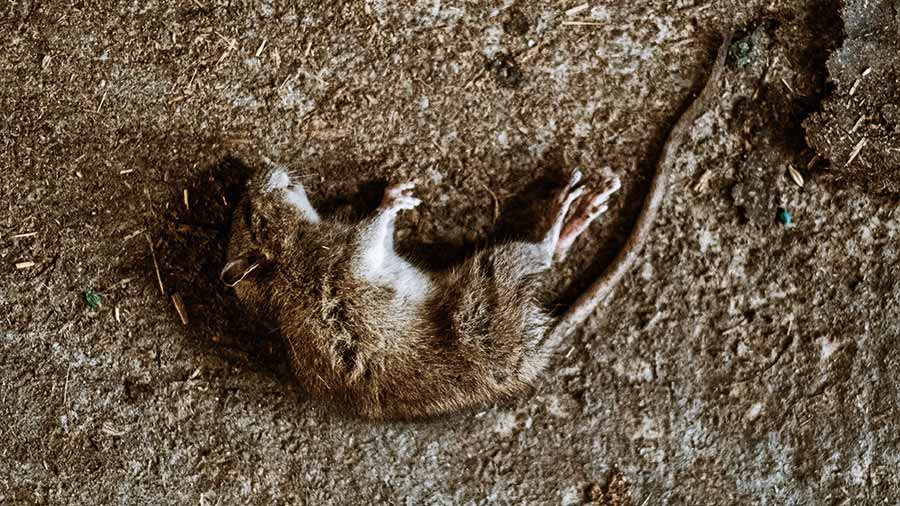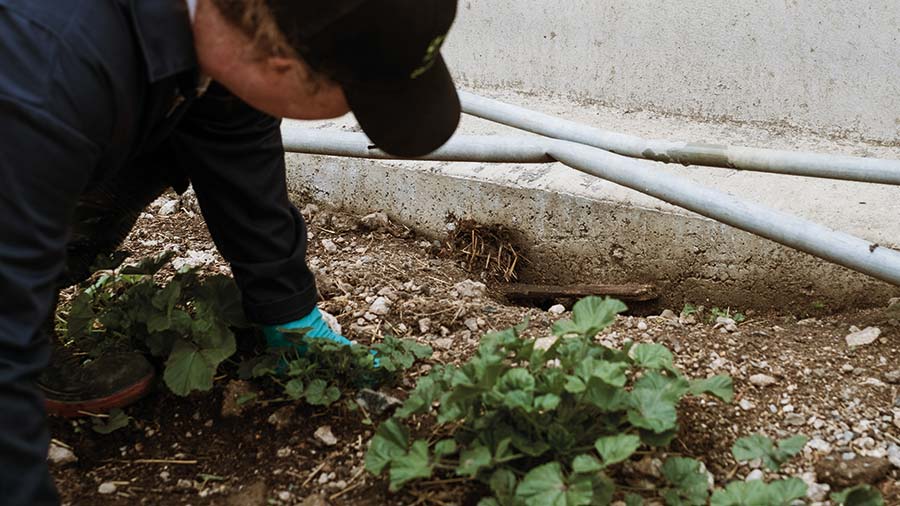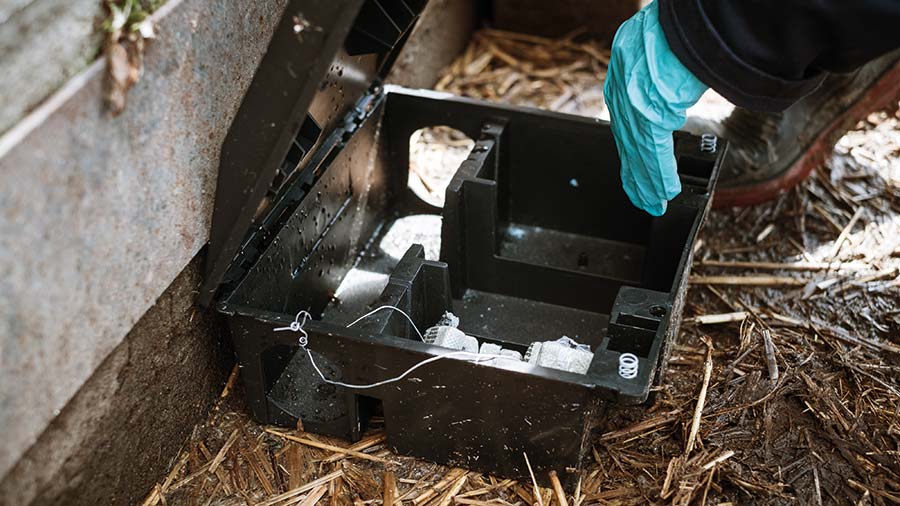Video: How to take an integrated approach to rodent control
 © MAG/Colin Miller
© MAG/Colin Miller The best way to deal with rat infestations is not to have them in the first place. Waiting until you see rats running around the farm is too late.
Every rat consumes about 10% of its bodyweight a day, or approximately 25-30g, according to Oliver Madge of PestWise. That’s the cost of having rats on your farm, he says.
See also: New rodenticide launched to tackle ‘super-rat’ resistance
Below, Mr Madge, and BASF’s Helen Ainsworth set out the steps for an integrated approach to rodent control.
1. Proofing
- Cut back vegetation between buildings and remove remnants of straw stacks as they give rats the opportunity to move around and look for food. Replace with hardcore, if possible
- Remove any vegetation growing up against the edges of buildings and install concrete aprons so rats cannot gain access
- Store and stack farmyard materials properly, and get rid of anything that is not needed, such as cardboard packaging, which makes ideal nesting material
- Ensure new buildings are finished properly so there are no gaps where rats can enter
- Check the farm regularly for signs of activity – ideally every day. Rats always use the same runs, from where they feed to where they live. Look for burrows and droppings
- Don’t wait until numbers build up – act immediately

© MAG/Colin Miller
2. Monitoring
- Lay small patches of sand where you suspect rats might be active – for example, running in and out of a pen to collect food
- Leave the sand patches down overnight or for 24 hours – if rats are present, you will see paw prints. If there is a lot of activity there may be no sand left
- This will help establish where rats are getting into buildings and show if further proofing is needed
3. Baiting
Traps may be used for small infestations, but if regular numbers continue to be caught, you will need to consider using rodenticides.
Non-target species – for example, dogs, cats or barn owls – and the implications of them getting access to bait must be considered as part of any baiting strategy.
- A baiting box, placed along a rat run, is the traditional method. Neophobia (fear of new things) in rats varies; if you can see a rat has run through the baiting box, but not taken the bait, leave the box in place and, after a few days, it will. But some rats may avoid the bait completely
- A “covered and protected” approach is more effective at minimising the risk of neophobia. Rats are more likely to eat bait placed at the entrance to their burrow. Attach a wire to the bait and tie it to a fixed point so it’s easy to retrieve and check. Cover the bait to protect it from non-target species

© MAG/Colin Miller
4. Choosing the correct bait
Rodenticides are used in different settings depending on their active ingredients. Whichever type is used, it’s important to search for rodent bodies and recover them to avoid secondary poisoning.
- First-generation anticoagulants, such as warfarin and chlorophacinone, are less toxic and less persistent than second-generation coagulants, and so present a lower risk to non-target species, but infestations can take longer to control.
- Second-generation anticoagulants based on bromadiolone or difenacoum are for multi-feed (or surplus) baiting, and are for use away from farm buildings – for example, by gamekeepers
- Second-generation anticoagulants based on flocoumafen or brodifacoum are for use controlling rodents in and around buildings
- Cholecalciferol has a different mode of action to first- and second-generation anticoagulants and does not persist in the environment. It is suitable for large infestations that need dealing with quickly and will control rats resistant to anticoagulants. Rats stop moving 24 hours after eating cholecalciferol bait, whereas they will keep moving for three or four days with single or multi feeds
5. Using bait correctly
- Baits come with clear instructions on how to use them, which must be followed
- The government monitors levels of rodenticide in the environment. Farmers must have a certificate of competence to buy rodenticides, belong to a farm assurance scheme approved by the Campaign for Responsible Rodenticide Use (Cruu), or use a qualified pest control contractor
- Keep records for farm-assurance compliance. This might involve making a sketch of the farm buildings, marking where bait has been placed and transferring the information to a paper or electronic record sheet
6. Rodenticide resistance
Some rodenticides are no longer effective in certain areas. Bromadiolone and difenacoum have the greatest incidence of resistance and will not work in, for example, Hampshire. If you use them in these areas, you are simply breeding resistance.
If you are using large quantities of rodenticide and you are not picking up dead bodies, you may need to switch product, otherwise all you are doing is feeding rats.
Cholecalciferol, flocoumafen and brodifacoum all work against rats with resistance.
However, the problem may not lie with the choice of bait: you may have underestimated the number of rodents on your farm. If in doubt, resurvey the site, review your baiting strategy and check you are using the correct bait in the correct quantity.
Further advice on rodenticides
- The Rodenticide Resistance Action Group offers advice
- The Rodenticide Resistance Action Committee compiled maps showing areas of resistance
- The Campaign for Responsible Rodenticide Use has details of rodenticide training courses and a register of wildlife-aware pest controllers
